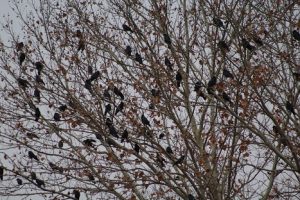
“You should see the crows out here!” my wife, Eileen exclaimed. “It is like the Alfred Hitchcock movie The Birds.” Sure enough, out along the back edge of our property at least 100 crows fidgeted around. Many were perched in nearby trees sitting and waiting. The others were in two spindly cedar trees (Juniperus virginiana L.) actively feeding. I went
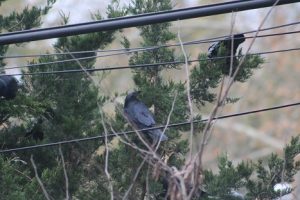
inside and got my binoculars to see what they were eating and I could see the crows deftly picking cedar berries from the branches.
Calling the fruits berries is not correct. These berry like fruits are actually small cones containing 3 or 4 seeds.[1]
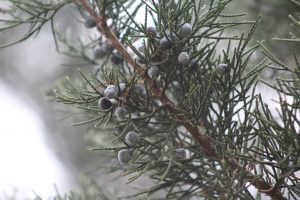
Earlier in the season, the trees were filled with berries, telling me that my trees are females. Classified as dioecious, red cedars have male trees and female trees, which is why you do not see berries on all cedar trees.
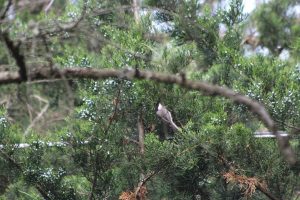
Only two days before this observation in early November 2017, an unusually warm fall ended with temperatures dropping from lows in the 40’s to well below freezing and into the teens. Did the crows deliberately wait until after the deep frost? Or, did we just miss them? Every time I make a nature observation, more unanswered questions pop up.
While I could find any number of web sites that claim eastern red cedar berries are somewhat edible and were a staple for many Native American tribes, few offered credible sources. I suspect the Native American’s did not eat large quantities, but used the berries for flavoring. Eat too many and the berries can be toxic.
Some consider the plant as a medicinal. A tea made from the berries was used by Native Americans to treat asthma. The twigs, leaves and roots provided “medicines” for a range of illnesses: arthritis, rheumatism, backaches, and coughs. Various parts of the plant were used to control bleeding, stop diarrhea, cleans a woman after childbirth, calm a hyperactive person, or stop nasal or lung hemorrhage.[2] I have no desire to try out any of these “remedies.”
Undoubtedly, the crows find the berries palatable, at least now that they have been frosted. Soon, the plants will pass through the bird’s intestines and be planted somewhere other than my yard. If you want to grow eastern red cedar from seeds, you need to soak them in an acid bath for two hours and then submit them to freezing.[1] The crow’s digestive system certainly will expose the seeds to the acid. Isn’t nature grand!
Eastern red cedar wood has a strong odor and I have fond memories of a cedar trunk used to store cloth. The belief was that the odor hid the smell of woolens from moths; though rigorous science has not proven this to be true.
Everything one can find, large or small, has its story. All I needed was to cedar crows to set me off.
- https://www.fs.fed.us/database/feis/plants/tree/junvir/all.html
- https://plants.usda.gov/plantguide/pdf/cs_juvi.pdf
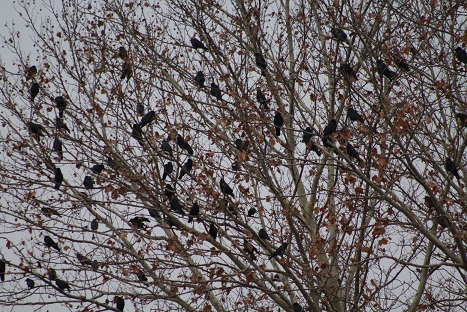
Comments
3 responses to “Cedar Crows”
Nice to have you back commenting on the natural world again. I enjoy your postings and your thoughts. I think I have a red cedar tree which I found growing only 2 inches high and growing next to a cement porch. I moved it out into the sun and now it’s 2 feet tall. I don’t know if it’s a boy or girl, but I haven’t seen any berries yet. How old do they have to get before they form their berries/cones?
A red cedar needs at least ten years before it produces flowers.
I thank you and Eileen for your observations and commentary. I love to be reminded that more observations bring more questions and study. Thanks for the sources. Patricia Merkel